



TLW's Viennascope™ (Vienna Historyscope) |
By T.L. Winslow (TLW), the Historyscoper™ |
© Copyright by T.L. Winslow. All Rights Reserved. |
Original Pub. Date: June 16, 2017. Last Update: July 2, 2017. |
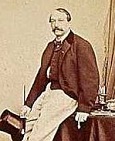
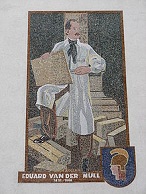
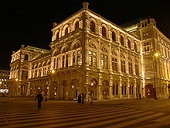
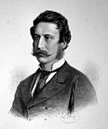
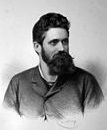
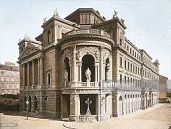
Westerners are not only known as history ignoramuses, but double dumbass history ignoramuses when it comes to Vienna history. Since I'm the one-and-only Historyscoper (tm), let me quickly bring you up to speed before you dive into my Master Historyscope.
In 16 B.C.E. the Romans begin expanding their territory W along the Danube River, creating the Celtic provinces of Noricum, bounded by the Danube River on the N, Rhaetia and Vindelicia on the W, and Pannonia on the E and SE, and Rhaetia (Raetia) (Etruscan?), W of Pannonia and N of Italy; too bad, Roman gen. Marcus Lollius (Paulinus?) (-55 to 2) (gov. of Gallia Comata) is defeated by the Germanic Sugambri at the Battle of Vindobona (modern-day Vienna) on the Danube River with his V Alaudae legion losing its eagle standard, causing emperor Augustus to become determined to end the pesky German problem once and for all, but ending up making Vindobona a frontier town, fortifying it next year.

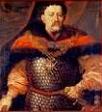


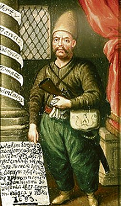

A touch of fame for a Pollock? On July 14, 1683 the Great Austrian-Turkish War (ends 1699) and the Polish-Turkish War (ends 1699) begin as 140K Turks with 300 cannon under Merzifonlu Kara ("Black") Mustafa Pasha (1634-83) begin the Second Siege of Vienna, held by only 20K troops under Count Ernst Rudiger von Starhemberg (1638-1701), culminating on Sept. 11 (the original 9/11) with the epic Battle of Vienna (Kahlenberg); the Christians hold out until Sept. 12 as sappers undermine the city walls, when Jan III Sobieski (1624-96) of Poland swallows his pride at the thought of the Ottoman border being so close to Cracow and allies with HRE Leopold I and duke Charles of Lorraine (1643-90) (who defeated Imre Thokoly of Hungary at Bisamberg 5km NE of Vienna in Aug.) to become CIC of the 84K-man combined armies and raise the siege with 3K Polish mounted Winged Hussars plus 34K Polish troops, 18.5K Austrians, 10.5K Bavarians, 9K Saxons, and 9.5K Swabian and Franconian troops, who stage the largest cavalry charge in history, making Sobieski a hero of Christendom, and marking the end of Islamic military conquests in Europe until ?; after the battle, Sobieski utters the soundbyte "Venimus, Vidimus, Deus Vincit" (We Came, We Saw, God Won); the Christian battle cry of "Maria Help" is amended at the suggestion of Johann Georg III of Saxony (who commands the left wing) to "Jesus and Maria Help", causing Sobieski to utter the soundbyte "The elector of Saxony is an honest man with a straight heart", after which Johann George III accompanies the HRE on his entry to Vienna, then abruptly leaves with his troops after they are treated like merde for being Protestants (kiss my ass, kiss your ass, happy Hanukkah?); after the liberation of Vienna, HRE Leopold I meets with Jan Sobieski in Schwechat near Vienna, which commemorted by an obelisk; Starhemberg also becomes a star, and is promoted to field marshal, but is severely wounded in 1686 at the siege of Buda and gets a desk job as pres. of the Hofkriegsrat; the V marks the hegemony of the Hapsburgs; on Dec. 25 Mustafa Pasha is strangled in Belgrade by the Janissaries and his head sent to sultan Mehmed IV in a velvet bag; too bad, Imre Thokoly, who fights with the Turks gets blamed by them for the whole D, and after rushing to Edirne to defend himself in front of the sultan, he flops and tries to make up with Sobieski, promising to lay down his arms if he is recognized as Protestant prince of Upper Hungary, but Sobieski demands unconditional surrender, and he has to fight on his own with neither side trusting him; the Turks leave massive stores of loot, with Sobieski uttering the soundbyte "Ours are treasures unheard of... tents, sheep, cattle and no small number of camels... It is a victory nobody ever knew of, the enemy now completely ruined, everything lost for them"; the first coffeehouse is opened in Vienna by Polish officer Jerzy Franciszek Kulczycki (1640-94) (known for escaping from the besieged city to get help) after the withdrawing sackers leave coffee sacks behind, introducing the custom of adding sugar and milk (melange); the first Vienna coffeehouse is really opened by Armenian Johannes Theodat in 1685?; like a rose that blooms then starts to decay, the Turkish Empire in Europe reaches its maximum extent, stretching from beyond Budapest on the Danube River, the Carpathians, and the headwaters of the Bug River to the Black Sea, Aegean, and Ionian Seas, with only Dalmatia (ruled by Venice) and Montenegro (semi-independent) as exceptions; after this, the Islamic world fails to keep pace with the West, incl. constructing public clocks, implementing standardized linear measurements, and modernization in general, compounded by pervasive autocracy.



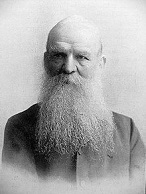
On May 25, 1869 the Neo-Renaissance Vienna State Opera House (Staatsoper) (originally Vienna Court Opera or Hofoper until 1920) in Vienna, Austria (begun 1861) opens, designed by Austrian architects August Sicard von Sicardsburg (1813-68) and Eduard van der Null (Nüll) (1812-68), and built by Czech architect Josef Hlavka (Hlávka) (1831-1908), becoming the first major bldg. on the Ringstrasse; too bad, the Ringstrasse is raised by 1m, causing the bldg. to become known as a "sunken treasure chest", and its popularity to tank, after which it becomes known as "the Koniggratz of architecture" (after the Austrian D in 1866).



In 1872 the Stadttheater in Vienna, Austria (begun 1871) is designed by Vienna-born Ferdinand Feller (1847-1916), who in 1873 teams up with Harburg, Germany-born Hermann Gottlieb Helmer (1849-1919) to form the architectural firm of Fellner & ealmer, which goes on to design 200+ bldgs. throughout the Austro-Hungarian Empire, plus more from Ukraine to Switzerland, hiring artists Theodor Friedl, Gustav Klimt, Hans Makart et al. for interior-exterior work, helping to bind the empire together and make Vienna its cultural center.